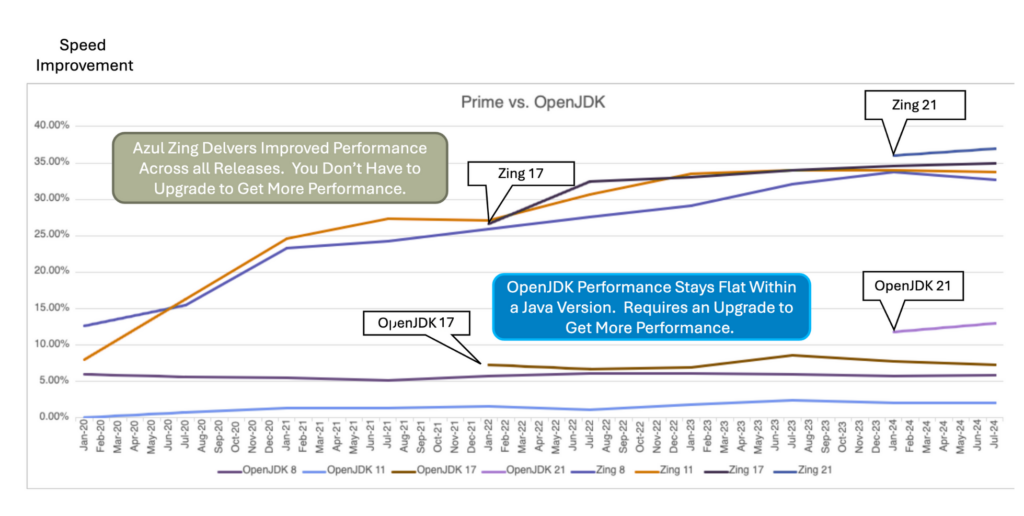
If you are looking for practical ways to develop Java applications and curb your cloud spending – we have your guide.
The Cloud Cost Optimization Cookbook is written from a Java developer’s point of view – but we suspect your engineering and architecture teams will find it a good read. We also bet your FinOps teams would benefit greatly from our practical tips.
Let’s face it; to grow and compete, many companies need the scalability, productivity, agility, and elasticity available in the cloud. However, the performance is frequently offset by high costs. Now companies are scrambling to better control cloud spending and draw down committed, discounted cloud spend that has been contracted through Enterprise Discount Programs.
The ebook offers seven strategies for lowering cloud costs and improving Java application performance – based on the ‘Inform’ and ‘Optimize’ phases within the FinOps Foundation framework:
- Chapter 1: Understanding Cloud Usage and Cost
- Chapter 2: Establish and Track KPIs for Usage and Cost
- Chapter 3: Leverage Spot Instances, Reserved Instances, and Savings Plans
- Chapter 4: Negotiate With Cloud Providers
- Chapter 5: Right-size and Autoscale Instances
- Chapter 6: Leverage Newer, More Efficient Compute Instances and Processors
- Chapter 7: Utilize a High-Performance Java Platform
Your company has most likely already embarked on one or more of these seven strategies – we just wanted to make sure you were more successful!
The guiding principles of Cloud Cost Optimization
While using the cloud more cost-effectively is important for almost any business, this guide focuses on running Java in the cloud.
It’s based on two movements critical to leaders doing business in the cloud: FinOps and frugal architecture.
FinOps + cloud financials
A new discipline often called FinOps or Cloud Financials attempts to bridge the gap between Finance’s call for fiscal responsibility and DevOps’ need for cloud resources to do their jobs. Since 2019, the FinOps Foundation has taken a leadership position in defining FinOps.
Organizations looking to improve their cloud spending should study the FinOps Framework thoroughly. Azul became a member of the FinOps Foundation in 2024 as we confront the same issues as many other organizations.
The FinOps Framework, like our book, is divided into three phases:
- Inform: Identify data sources for cloud cost, usage, and efficiency data for allocation, analysis, and reporting.
- Optimize: Identify opportunities to improve cloud efficiency using the data and capabilities developed in the Inform Phase.
- Operate: Implement organizational changes to operationalize FinOps by building on the Inform and Optimize phases.
A deeper view of the Frugal Architecture + Cloud-Native Java applications
Cloud computing isn’t just about running applications on someone else’s infrastructure. Containerization, elastic computing resources, and new coding paradigms have helped change how companies author Java applications.
The Frugal Architecture, popularized by AWS CTO Werner Vogel, recognizes the impact cost has on the business. Using this methodology, engineering teams have started incorporating cloud financial factors into software design and development.
Cloud Cost Optimization Cookbook at a glance
The first six strategies in the Cloud Cost Optimization Cookbook are relatively straightforward.
They are critical for success in the new world of cloud-based business, but they omit one very crucial strategy that often gets overlooked: the Java runtime. Azul Zing Builds of OpenJDK is built to deliver more performance with the same or fewer cloud instances.
Utilizing a high-performance Java Platform puts a huge dent in any cloud bill. Eventually, companies exhaust the savings and efficiencies available from the efforts outlined in this guide.
Today, you need to optimize your Java workloads to achieve further cost reductions because traditional JVMs limit your ability to get the most out of cloud cost optimization strategies.
How a Java runtime can impact cloud costs
When considering ways to lower cloud costs, people usually look at things like storage and ephemeral server configurations. They don’t think of the underlying JDK… but they should.
Azul Zing Builds of OpenJDK has a unique set of features that makes the Azul Platform Prime Java runtime more performant and less expensive to run. Those features include:
- ReadyNow front-loads optimizations to decrease warmup time.
- Cloud Native Compiler offloads optimizations to an external compilation service, achieving shorter warmup times at a lower CPU cost.
- G4 Garbage Collector delivers pauseless garbage collectors to perform GC without pausing execution threads, eliminating most latency spikes caused by GC.
As a result, Azul Zing Builds of OpenJDK outperforms Oracle vanilla OpenJDK by a wide margin.

Our customers provide the proof
LMAX, the first multilateral trading facility for FX trading regulated by the Financial Conduct Authority, uses Azul Platform Prime as its technology foundation. LMAX leveraged their team of engineers to improve their Java performance even over the high level set by Azul Platform Prime.

A major global retailer reduced their compute by 40% and transitioned more than 70 eCommerce Java applications to Azul Platform Prime.

Leading companies use Azul to improve the performance of their applications while lowering their cloud costs. You can read their Cloud Cost Optimization case studies on our website.
Please read the Cloud Cost Optimization Cookbook and learn more about how all these strategies can help your organization be more efficient and more productive in the cloud.
Learn More
Read the Cloud Cost Optimization Cookbook





